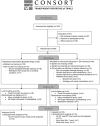Combination Therapy With Zoledronic Acid and FES-Row Training Mitigates Bone Loss in Paralyzed Legs: Results of a Randomized Comparative Clinical Trial
- PMID: 31131346
- PMCID: PMC6524678
- DOI: 10.1002/jbm4.10167
Combination Therapy With Zoledronic Acid and FES-Row Training Mitigates Bone Loss in Paralyzed Legs: Results of a Randomized Comparative Clinical Trial
Abstract
Spinal cord injury (SCI) results in rapid, severe osteoporosis and an increased risk of lower extremity fractures. Despite the medical complications associated with these fractures, there is no standard of care to prevent osteoporotic fractures following SCI. Functional electrical stimulation- (FES-) assisted rowing is a promising intervention to improve bone health in SCI because of its ability to generate a muscular contraction in conjunction with mechanical loading of the lower extremity long bones. Combination therapy consisting of FES-rowing plus zoledronic acid (ZA) may be a superior treatment via inhibition of bone resorption and stimulation of new bone formation. We studied participants enrolled in a randomized clinical trial comparing FES-rowing alone with FES-rowing plus ZA to improve bone health in SCI. Volumetric CT scans at the distal femur and proximal tibial metaphyses were performed. Bone geometric properties (cortical thickness index [CTI], cortical compressive strength index [CSI], buckling ratio [BR], bending strength index) and mineral (cortical bone volume [CBV], cortical bone mineral density, cortical bone mineral content) indices were determined. In models adjusting for baseline values, we found that the CBV (p = 0.05 to 0.006), the CTI (p = 0.009), and the BR (p = 0.001) at both the distal femoral and proximal tibial metaphyses were greater in the ZA plus rowing group compared with the rowing-only group. Similarly, there was a significant positive association between the total rowing work completed and the BR at the proximal tibia (p = 0.05). A subgroup analysis of the rowing-only arm showed that gains in the CSI at the tibial metaphysis varied in a dose-dependent fashion based on the total amount of exercise performed (p = 0.009). These findings demonstrate that the osteogenic response to FES-rowing is dose-dependent. Combination therapy with ZA and FES-row training has therapeutic potential to improve bone quality, and perhaps reduce fracture risk at the most common fracture site following SCI. © 2019 The Authors. JBMR Plus Published by Wiley Periodicals, Inc. on behalf of the American Society for Bone and Mineral Research.
Keywords: ANTIRESORPTIVES; BONE QCT; CLINICAL TRIALS; OSTEOPOROSIS; THERAPEUTICS.
Figures





Similar articles
-
Functional electrical stimulation (FES)-assisted rowing combined with zoledronic acid, but not alone, preserves distal femur strength and stiffness in people with chronic spinal cord injury.Osteoporos Int. 2021 Mar;32(3):549-558. doi: 10.1007/s00198-020-05610-x. Epub 2020 Sep 4. Osteoporos Int. 2021. PMID: 32888047
-
Effects of FES-Rowing Exercise on the Time-Dependent Changes in Bone Microarchitecture After Spinal Cord Injury: A Cross-Sectional Investigation.JBMR Plus. 2019 Sep 3;3(9):e10200. doi: 10.1002/jbm4.10200. eCollection 2019 Sep. JBMR Plus. 2019. PMID: 31667456 Free PMC article.
-
Bone changes in the lower limbs from participation in an FES rowing exercise program implemented within two years after traumatic spinal cord injury.J Spinal Cord Med. 2020 May;43(3):306-314. doi: 10.1080/10790268.2018.1544879. Epub 2018 Nov 26. J Spinal Cord Med. 2020. PMID: 30475172 Free PMC article.
-
Clinical Benefits and System Design of FES-Rowing Exercise for Rehabilitation of Individuals with Spinal Cord Injury: A Systematic Review.Arch Phys Med Rehabil. 2021 Aug;102(8):1595-1605. doi: 10.1016/j.apmr.2021.01.075. Epub 2021 Feb 6. Arch Phys Med Rehabil. 2021. PMID: 33556345
-
Development of Functional Electrical Stimulation Rowing: The Rowstim Series.Artif Organs. 2017 Nov;41(11):E203-E212. doi: 10.1111/aor.13053. Artif Organs. 2017. PMID: 29148129 Review.
Cited by
-
Effect of Adapted Ergometer Setup and Rowing Speed on Lower Extremity Loading in People with and Without Spinal Cord Injury.Bioengineering (Basel). 2025 Jan 15;12(1):75. doi: 10.3390/bioengineering12010075. Bioengineering (Basel). 2025. PMID: 39851349 Free PMC article.
-
Models of care for osteoporosis: A systematic scoping review of efficacy and implementation characteristics.EClinicalMedicine. 2021 Jul 14;38:101022. doi: 10.1016/j.eclinm.2021.101022. eCollection 2021 Aug. EClinicalMedicine. 2021. PMID: 34345811 Free PMC article.
-
Effect of External Mechanical Stimuli on Human Bone: a narrative review.Prog Biomed Eng (Bristol). 2022 Jan;4(1):012006. doi: 10.1088/2516-1091/ac41bc. Epub 2022 Jan 10. Prog Biomed Eng (Bristol). 2022. PMID: 36310606 Free PMC article.
-
Spinal Cord Injury as a Model of Bone-Muscle Interactions: Therapeutic Implications From in vitro and in vivo Studies.Front Endocrinol (Lausanne). 2020 Apr 15;11:204. doi: 10.3389/fendo.2020.00204. eCollection 2020. Front Endocrinol (Lausanne). 2020. PMID: 32351450 Free PMC article. Review.
-
Spinal cord injury providers' perspectives on managing sublesional osteoporosis.J Spinal Cord Med. 2020 Jul;43(4):428-434. doi: 10.1080/10790268.2019.1704552. Epub 2019 Dec 20. J Spinal Cord Med. 2020. PMID: 31859610 Free PMC article.
References
-
- Carbone LD, Chin AS, Burns SP, et al. Mortality after lower extremity fractures in men with spinal cord injury. J Bone Miner Res. 2014. Feb; 29(2):432–9. - PubMed
Grants and funding
LinkOut - more resources
Full Text Sources
Miscellaneous
